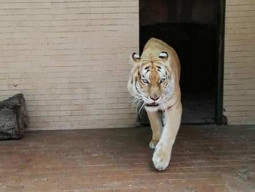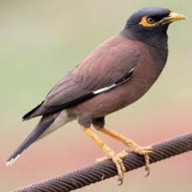
The birds also served as nature’s own pest controllers, and the price for pushing them out has been heavy, according to experts.
From 240 species of birds recorded in a study conducted in 1965, Lahore is down to a few dozen easily identifiable ones, and even that number is dwindling, ornithologists say. Though there is no recent study available with academia in the concerned discipline or the relevant government department to highlight exactly how many species of birds remain in Lahore, Dr Zulfiqar Ali, a professor at the Punjab University Zoology Department, says his students only managed to find 10 to 15 varieties in a daylong study of the city’s winged population.
Wildlife documentaries to be filmed in Punjab
He says that when they tried doing the same exercise for a full week, they identified 50 species. He believes the number may still be as high as 80 species of birds if migratory birds are included. However, the fact remains, he says, that Lahore has lost more than half of its bird species, which is an alarming sign for the local ecological system.
Cheery and colourful swallows (martins), rose-ringed parakeets, mynas, coppersmith barbets, bulbuls, larks, sparrows, and doves – many of which are biological pest controllers – have been replaced in the city’s skies by kites and crows, both of which are scavengers and also hunt smaller mammals and birds.
He underlines that the rapid decline in biological pest controllers had raised the cost of keeping the population of insects under control to billions of rupees. He continues that if the ecological system was allowed to function without any negative human intervention, it would have kept the population of mosquitoes under control, thus stopping or even containing the regular outbreaks of dengue fever.
“This is just one direct favour insectivorous birds do for us,” he explains.
He says that there are also indirect advantages of these pest controllers as they safeguard crops and fields. “They help plants and trees with pollination and seed dispersal.”
He points out that swallows and sparrows have been known to substantially reduce insect and pest populations without the health, environmental, and economic impact of using harmful pesticides.
Why the decline
According to Dr Zulfiqar and Dr Javeed Iqbal – another professor at the zoology department –the main reason for the decline in bird populations is the rapid unchecked urbanisation of the city which has eaten away at its green cover and forced the animals to migrate away from Lahore. He says that there were wetlands in and around Lahore which attracted a lot of migratory birds and then there were old trees for nesting and fruit trees for food.
World Wide Fund for Nature (WWF-Pakistan) Director General Hammad Naqi told The Express Tribune that the poor planning of previous provincial governments to plant exotic trees instead of indigenous ones, which allowed the roosting and nesting of local birds, was also to blame. “Such plantation did not have any positive environmental impact,” he said.
Naqi continued that urbanisation also reduced breathing zones within the city to make room for infrastructure projects.
A 2008 study, conducted by WWF-Pakistan during the canal road expansion project, highlight the importance of indigenous trees for birds. According to the study, birds were ecologically linked to the gul-e-nishtar, mulberry and pipal trees for food. House crows, rose-ringed parakeets, bank mynas and common mynas were ecologically linked to poplar, Alstonia, eucalyptus, shisham and beeri patta trees for roosting. Many cavity nesters such as rose-ringed parakeets, common mynas, spotted owlets and coppersmith barbets were seen nesting on poplar, eucalyptus and pipal.
Pariah kites mostly prefer this habitat for nesting due to the presence of tall trees such as eucalyptus, poplar and simal.
Punjab Wildlife and Fisheries Department Deputy Director Naeem Bhatti says the decline in the indigenous bird population was in the notice of the department. He adds that other than deforestation and urbanisation, there is the rising issue of ‘sadkay ka gosht’ in Lahore. He says that this trend starts from around the Ravi River, but has now expanded to the entire city.
He adds sadkay ka gosht, given to birds, attracts a lot of kites and crows, increasing their populations at the expense of other birds. He says birds of prey not only eat smaller birds, but also feast on their eggs. Kites, he adds, are also a threat to civil aviation as they can impact planes during take-off and landing.
Lahore Zoo’s elephant cage destined to remain empty
He says that their department cannot take action against sadkay ka gosht vendors. “The Lahore deputy commissioner’s office has to take action against them to prohibit such sales.”
He continues that poachers are also a factor as the birds are caught in large numbers and then taken to markets where people pay to set them free. He says that they have started a strict crackdown against poachers in the province.
The deputy director reveals that authorities will be launching a toll-free helpline within in a couple of days to allow people to lodge their complaints.
Another official of the department says the meat of birds such as myna and lali is sold as quail meat, which adversely impacts the population of these species.
Published in The Express Tribune, May 19th, 2019.


























1714024018-0/ModiLara-(1)1714024018-0-270x192.webp)










COMMENTS
Comments are moderated and generally will be posted if they are on-topic and not abusive.
For more information, please see our Comments FAQ